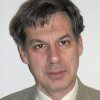Welcome to the peer-reviewed papers section of Oil and Gas Facilities, for which I have selected four papers. As I have mentioned before, it is anything but a chore to read the papers that are submitted for review. Many offer interesting insights on topics that are relevant to the issues many of us deal with routinely. The papers in this issue address three topics: water treatment, pipeline embedment, and weight growth of offshore facilities during design.
Water-treatment systems in the North Sea differ from those in the deepwater US Gulf of Mexico (GOM). Hydrocyclones are used extensively in the North Sea, and large, multistage horizontal flotation units are used in the GOM. While platforms in the GOM do use hydrocyclones, it is not nearly to the extent that they are used on typical North Sea platforms, and if flotation is used at all on North Sea platforms, it is a vertical compact unit. The objective of the first paper is to provide an understanding of the reasons for these differences.
Water treatment is also important when it comes to the production of shale oil and gas. With advances in hydraulic fracturing and horizontal drilling, oil and gas activities have increased substantially in several regions across the US. To minimize the effects of increased water use, many oil and gas companies are pursuing the recycling of fracture flowback water and produced water for subsequent drilling and fracturing operations. Common processes include metal precipitation and electrocoagulation. The second paper reports on a study that examined the precipitation of calcium, magnesium, barium, and strontium through the addition of target ligands, followed by solid separation with electrocoagulation.
The third paper deals with leak detection in gas pipelines. As an alternative to physical inspection, leaks in gas pipelines can be detected through model simulation. The authors introduce a model-simulation method that can be applied when either the rates or pressures at the inlet and outlet of the pipeline are unknown. By conducting multiple rate tests, the method provides a straightforward approach to locate leaks and estimate leak size in both a single pipeline and parallel pipelines.
The last paper deals with the weight of an offshore facility, which significantly affects the cost, schedule, and complexity of offshore-facility projects. Therefore, controlling the weight is important to project success. The paper seeks to understand weight growth and its causes among different project phases by evaluating more than 150 offshore projects around the world. The outcome shows that weight growth is much higher than expected and provides a better understanding of the main causes.
I hope that you will review these interesting papers, and perhaps feel encouraged to submit either a discussion (if you feel that the content of a paper warrants further debate or comments) or a paper for peer review.
Gerald Verbeek, Peer-Review Editor,
Verbeek Management Services
Associate Editors
Williams Chirinos,
InexertusGalen Dino, Audubon Engineering Solutions
Sudhakar Mahajanam, ConocoPhillips

